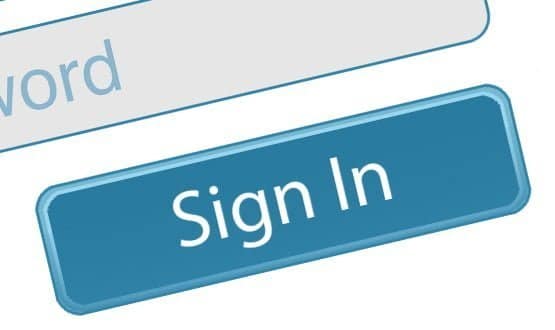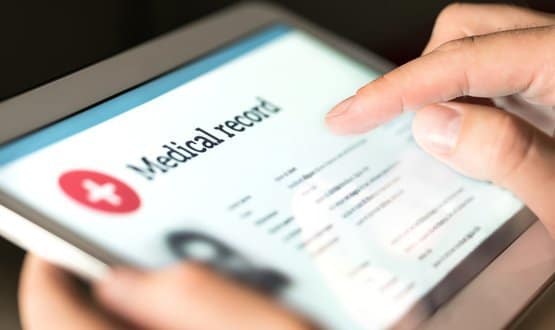Ade Memoire: ID, log-in, do stuff
- 6 July 2015

I haven’t written anything for a while. Kind of been in dark territory, in purdah and all that J
Top of the agenda, now I’m out and about again, seems to be patient access to records. How do we make better information available to clinicians and share it? And how do we provide better management data for population studies and the like?
On this occasion, I want to consider the progress that has been made with regards to patient online access in the acute sector. My hope is that it might prove a concept for a more joined up experience in the future, in which patients can use a single identity to access a number of truly interactive, cross sector, health related services.
Strands of work
Prostate Cancer UK is managing a project called True NTH. This is an international programme, funded by the Movember Foundation, that aims to improve “survivorship care” for men with prostate cancer
University Hospitals Southampton NHS Foundation Trust has been commissioned to provide the IT to support this. As part of the True NTH Programme, and in partnership with Prostate Cancer UK, we have launched a project supporting prostate cancer patients from different cancer centres in virtual follow up.
This project solution joins the patient with their hospital, runs a virtual clinic function so clinicians are engaged, and also pushes data to a personal health record outside of any of the services or systems. I think this separation is important, but I guess we’ll see.
In another strand, my colleague on the Hampshire Health Record, Amir Mehrkar (the self-styled Robin Hood of information), the NHS England architecture folks and myself have been talking about the possibility of a health identity.
This would enable a GP to vouch once for a patient, who will then have access to a validated NHS Number [record]. The patient could then use the credentials that the [usually] gained for their GP practice to immediately gain access to services and information sources offered at Southampton General [or other].
I’m quite excited about that and I hope it goes somewhere (although we did almost came to blows as I wanted a speaking part such as Friar Tuck – fat, bald, jovial lover of ale – perfect – but had to end up agreeing to be just one of the Merry Men).
The NHS has a great resource in the NHS Number and this kind of linkage, I think, is a great way to use it.
Those pesky pace-setters
One of the problems with dealing with this interesting and complex area is before you even start, the world of the e-tailer, the on-line banker, and so on and so forth has arrived before you and laid down all kinds of false perceptions.
One of these, for example, is that your bank will email things to you so “why can’t we have email”? As we know, a bank will not email you anything other than a link to a website where you must log-in. So, where do these new customers of ours log-in?
I think we need to keep focused on what we know will work for us. And one thing I believe we have worked out is that there are three components to a good online experience for patients:
- Their credentials or identity and how we vouch for those – signing them up and such – so that they can access a record attached to a validated NHS Number
- An authentication service that they can then use to vouch for themselves against other trusted systems in a so called federated way so that they can, for example, start with access to a GP system then use those same log-in details [username/password] to prove themselves when they connect to an acute trust
- A personal health record, which is a cloud based resource that will hold shared information entered by care professionals, the patient themselves, and an increasing array of both personal and health service provided wearable technologies.
Some or all of those may be provided by one vendor system but the separate functions should in my view be recognised.
At Southampton
As mentioned, we have been working with Prostate Cancer UK on virtual follow up. There are a number of planned modules within this programme, plus functionality for other cancers within the separate trust programme.
But the initial phase with Prostate Cancer UK sees patients who have stable disease being introduced to supported self management. This means they do not have to attend clinic for regular outpatient appointments but have their progress monitored remotely by their clinical team and have the support of the IT solution.
We have built this so the site connects to the University Hospitals Southampton electronic patient record, but will allow any other EPR to connect through it and to the personal health record.
In other words, it has been used to allow other hospitals to connect their patients to their EPR whilst using the functionality on the TrueNTH site. If a hospital or care provider is capable of a bit of HL7 messaging, demographics/results, then they can potentially hook up.
Not that we are trying to market this or anything as such, and are certainly not looking for “customers” right now, but it proves the independence of the functions, and it fits in with the above described model of:
- An identity
- An [federated] authentication mechanism
- A PHR
I think, as many others have said, that if we are going to really transform the health system we need to be harnessing the power of the patient. A number of people are now properly connecting services up for on-line access.
It is encouraging to see that the conversation has moved on from “giving access for patients to their record”.
However, I am not aware of anyone that has yet federated an identity in any way. Some have done the PHR bit, but only for a single organisation, and it would seem that Microsoft HealthVault is currently the only service of its kind up and running.
Microsoft HealthVault provides a federated identity through Live ID, and a PHR with inbuilt connectivity to devices such as a blood glucose monitor.
Although it does have an option to allow a user to log into it using their Facebook credentials, it is not clear at the moment where this will sit with any government online ID scheme. Microsoft is also re-designing HealthVault; so watch this space.
So where next?
Patients shouldn’t have to think about this too hard. Getting on there should not be like a visit to the proverbial dentist (although I quite like mine, he saved my life J).
We need to think about giving the “customers” the things they like while they are on the site, need to make it useful to them somehow, so they come back. This might be where all those frivolous fitness apps and things come in, or possibly nutrition.
If they are just dropping by on a regular basis, then it’s a whole lot easier to get them to fill in a form, or consent to something, or check their data quality, while they are about.
I don’t really think we are going to get anywhere if the patient’s only interaction with you is a one-off outpatient appointment or once in a blue moon encounter. To go through a registration process for that is just never going to be worth it.
It’s impossible to overstate how important patient engagement is and how hard you may have to work at it – by far our biggest and never ending challenge. One of the most important members of your team may be a permanent communications lead.
Patients need to be already identified, have credentials that they use reasonably regularly, and ideally be on a site doing something for themselves at the point you want them to do something for you.
It sounds like a lot of work to put in: but we see half a million outpatients a year, so getting a chunk of them to do some of the work is going to make a fair difference.


Adrian Byrne
Adrian – Ade – Byrne is director of IM&T at University Hospital Southampton NHS Foundation Trust which, he says, has been working on its IT environment for 15 years.
On his LinkedIn profile, he says its aim is to “build an electronic patient record with full decision support, sharing data across disparate, so-called best of breed systems.” The trust is also developing a patient record and services, built on Microsoft HealthVault.




